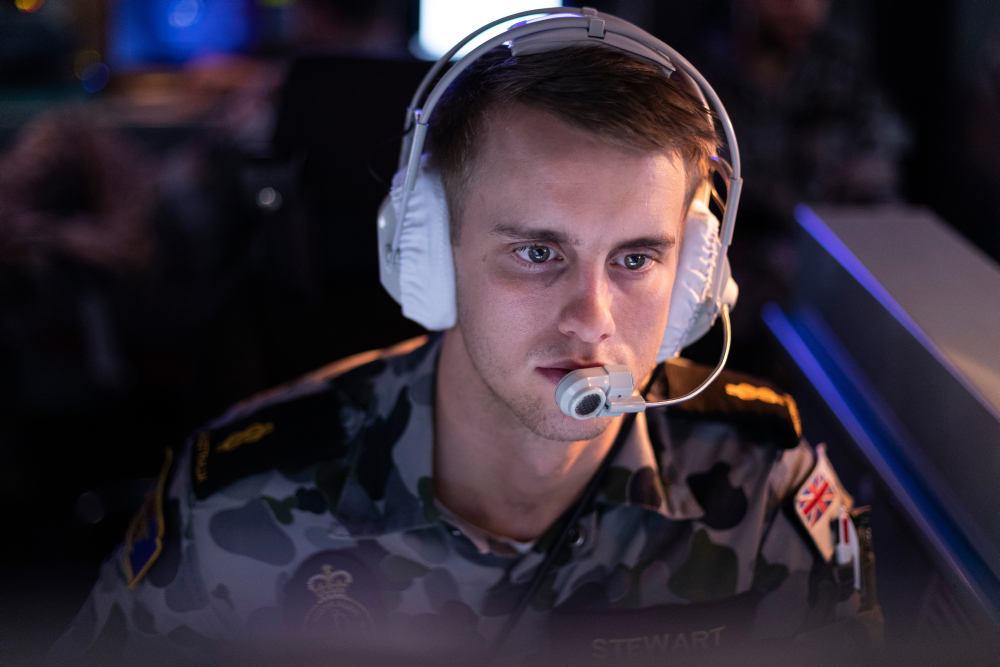
The Royal Australian Navy faces the greatest challenge of the Australian Defense Force as it pursues a nuclear-powered submarine fleet, according to the nation’s latest defense blueprint.
Building the new boats under the AUKUS agreement is central to Australia’s new strategy of denial to meet the increasingly aggressive threat from China.
Australia’s shift from a balanced force that addressed low-level regional challenges to a force focused on long-range response to threats with little warning was necessary, Sir Angus Houston, the co-leader of the Defense Strategic Review, said Wednesday.
“The strategic circumstances have been going down for a long time.” The review aimed “to make [the force] more ready” for warfare in an age of great power competition, he said.
Those circumstances, he told the audience at the Center for Strategic and International Studies, include Beijing’s move “very assertively” to claim sovereignty over the South China Sea. “The South China Sea is very important to us” for trade and energy. For its national security, he added that guaranteeing the supply of energy, its storage in Australia and its distribution, especially to the nation’s northern approaches, is critical.
“Assuring an adequate workforce to sustainably meet enterprise priorities and transformation, government-directed tasking, readiness for future contingencies, and transitioning new and technologically advanced capabilities into service is Navy’s biggest challenge,” reads the New Defense Strategic Review, which was released to the public on April 24.
The review does not provide estimates of the required number of sailors for its new submarine and more lethal surface forces, nor does it disclose how many workers, like ship fitters and scientists, are required in its shipyards.
In addition, as Houston and the review noted, the RAN needs six more months to sort out the naval force structure of its tier-one Hobart-class destroyers and Hunter-class frigates and the tier-two corvettes and off-short patrol vessels. The strategy calls for both tiers to be more lethal, provide air defense, be capable of anti-submarine warfare and operate effectively in presence patrols.
“What’s the right mix” is the question the follow-up maritime force review must answer. The shipbuilding aspect of that review will assess how Australia can consistently build and deliver ships. It must assess “the cost, schedule and risk” involved.
While speed is required to make this transformation, “you can’t turn a switch” to make the entire force more ready in six months or a year or two, but it is necessary, Houston said.
With the nuclear-powered submarine as the top priority, Houston, a former defense chief, said: “I think the Virginias will be there” before the late 2030s. He was referring to Australia buying Virginia-class submarines from the United States to fill in the gap until Canberra can build its own boats.
Houston said Australia needs sustained investment in long-range precision strike, particularly to hit moving targets. “We have the industrial capability to do that,” he said.
Of immediate concern is rebuilding bases in northern Australia for its ground forces. Houston said there has already been $4 billion AUD put to that project. The Australian Army also needs to invest in heavy landing craft that are capable of carrying tanks, armored personnel carriers and long-range artillery such as High Mobility Artillery Rocket Systems (HIMARS), and structured to operate in a littoral environment.
“We want the army to have a long-range maritime strike,” he said.
He added that in sending the report to Prime Minister Anthony Albanese, the authors said the Australian Defense Force will need a sustained funding boost over decades to achieve the objectives. The government agreed.
Houston said Australia has upped its defense spending from 2.1 percent of its gross domestic product “to 2.3 percent for the mid-term.”
In Australian dollars, he said the estimates for additional spending in the mid-term are $9 billion for the nuclear submarine, $4 billion each for long-range strike and the northern bases and $1 billion for people.





